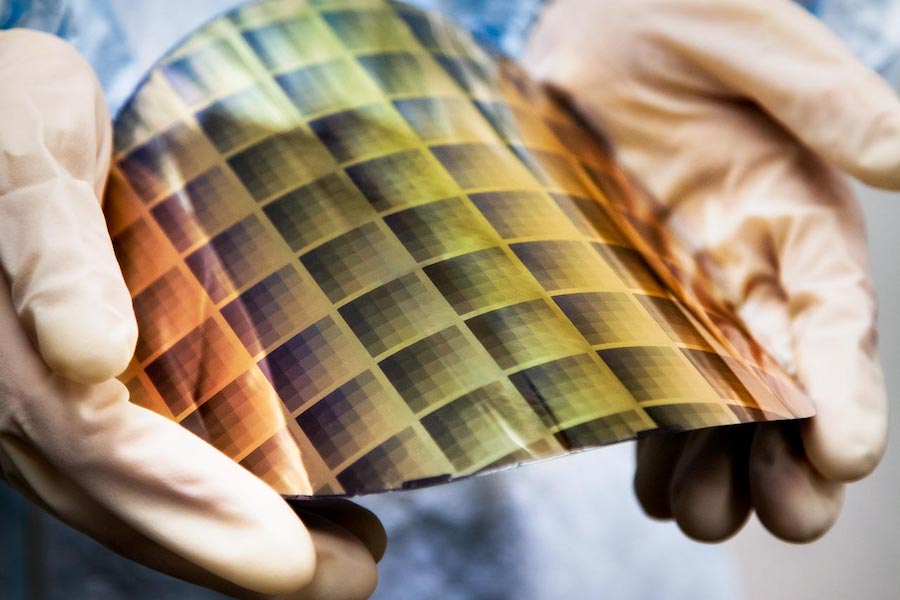Adhesive bonding is a technique that has been utilized in multiple application areas to develop a bond connecting one surface to another. It makes use of a polymeric intermediate layer that creates the bond. As compared to other permanent bonding techniques, adhesive bonding brings about significant advantages such as improved design flexibility, surface planarization, and high or low bonding temperature. Appropriately, innovative permanent bonding materials, namely the PermaSOL™ family of materials, have been developed to ensure a highly reliable bond with good thermal stability and low moisture absorption. In this article, we will discuss what adhesive bonding is and how PermaSOL™ materials can be the right choice when it comes to high-temperature adhesives and potential dielectric material properties.
Adhesive bonding against other bonding techniques
Bonding two components together permanently is a procedure that is applied in many application areas, such as microelectromechanical systems (MEMS) and three-dimensional integrated circuits (3-D ICs). Such bonding techniques include direct bonding, anodic bonding, soldering, thermocompression, ultrasonic bonding, and eutectic bonding, to name a few. However, many of these techniques struggle with flexibility in design, bonding temperature, tolerance, and surface planarization issues that render them a nuisance for engineers, researchers, and product developers.
Adhesive bonding is another widely used method that can allow for a powerful bond between two substrates. It relies on two central properties known as adhesion and cohesion. Simply put, adhesion is the bonding of dissimilar molecules, while cohesion is the bonding of similar molecules. Adhesive bonding makes use of a polymer adhesive in between the two surfaces to create a robust bonding layer. This method has proven advantages over the others as it helps bring about high throughput via:
- greater flexibility in design
- lower bonding temperature
- better tolerance to particles
- higher bond quality and bonding strength
- good surface planarization and adaptability to surface topography
- low costs
- compatibility with many substrate materials
- minimal or no surface treatment prior to bonding
Traditionally, the process is achieved by coating one substrate with a polymeric material that has adhesive properties and putting it in contact with another substrate using a thermocompression bonding tool. The tool compresses the two components using heated platens, resulting in a strong adhesive bond in between the two surfaces. Afterwards, the adhesive material is solidified via a curing process, which involves subjecting it to UV light or heat.
Material selection for adhesive bonding
Many materials, especially polymeric materials, have been developed to meet the requirements of permanent adhesive bonding applications. However, a couple of challenging problems have hindered their use in mass production. These include the undesired aspect of moisture absorption, which lowers the polymer’s strength; inadequate thermal stability, which causes the material to lose their useful properties; and the lack of long-term reliability. Thermal stability, in particular, is the temperature range that a material can tolerate and yet maintain the properties needed for a given application over a specified period of time. Heat-resistant polymers, generally, grapple with the issue of two conflicting requirements, thermal stability and processibility. Typically, heat-resistant materials tend to be hard to process and exhibit low solubility.
When selecting the right adhesive bonding material, there are key factors to take into consideration.
- The polymeric material must be compatible with the substrate surface and the coating films deposited beforehand. This the most important compatibility is in their coefficient of thermal expansion (CTE), as a significant mismatch in CTE can result in thermal stresses and could lead to delamination and cracking problems.
- The material should exhibit good thermal and mechanical stability, adhesion capabilities, good chemical resistance, and appropriate levels of elongation and elastic modulus.
- It should have low shrinkage to avoid any heat-induced stresses.
- It must have minimal levels of water uptake to achieve bond interfaces that are free of voids.
- It should have low curing temperatures to protect other components that may be sensitive to high temperatures.
- It should be sufficiently reliable over the long term.
An ideal polymer material for adhesive bonding
One material that has been commonly used as a bonding adhesive is benzocyclobutene (BCB), due to its relatively low curing temperature, low moisture uptake, and high planarization abilities. However, BCB struggles with compatibility with a low bond temperature and suffers from an extended curing process and a high cost of ownership, not to mention the difficulty to eliminate voids in the bond while maintaining a high alignment accuracy after the bonding is done.
Therefore, we set out to develop an innovative permanent bonding material that can rise above the mentioned challenges. PermaSOL™ materials are a high-temperature thermoset solution that characteristically has good thermal stability and low moisture absorption. With its low dielectric constant, high chemical resistance, enhanced rheological properties, high adhesion capability to different materials (including metal oxides). With their low-temperature adhesion (room-temperature bonding), PermaSOL™ materials help achieve high throughput with excellent reliability embodied in its high bond quality and strength, improved surface planarization, void-free bonding, and accurate post-bonding alignment. These materials are also soluble in many solvents that are accepted in the industry and can be rapidly cured at relatively low temperatures. The table below shows the properties of PermaSOL™ series materials and their application areas.
Table 1. The different properties and applications of PermaSOL™ series products.
|
|
PermaSOL™ Series Material (example) |
|
Mechanical Properties |
|
|
Elastic modulus |
3.4 GPa |
|
Thermal Properties |
|
|
Coefficient of thermal expansion |
4.5 * 10-5 1/K |
|
Glass transition temperature |
100°C |
|
Maximum service temperature |
300°C |
|
Electrical Properties |
|
|
Dielectric constant |
2.7 at 10 GHz |
|
Potential Application areas |
High-temperature adhesives and bonding |
Today, PermaSOL™ family materials are most prominently used as both a high-temperature adhesive and a potential dielectric. Adhesives that are generally used for low temperatures tend to weaken and degrade at high temperatures, while those used for high temperatures tend to become brittle and stiff at lower temperatures. PermaSOL™ family materials are particularly developed to retain their properties and thermal stability over a wide range of temperatures (room temperature to 300°C). Furthermore, dielectric materials are at the basis of electric circuits and particularly used to make dielectric capacitors. Polymer dielectrics, in comparison with ceramic dielectrics, exhibit superior performance, especially with their excellent mechanical flexibility, minimal loss of energy, high dielectric strength, low cost, and lightweight. As the demand for high-temperature, high-energy-density capacitors is growing rapidly, high-temperature polymer dielectrics could potentially support the industry’s needs. PermaSOL™ series materials can offer many of the characteristics necessary for polymer dielectric applications.
You can learn more about Brewer Science’s bonding technologies by visiting the website, or schedule a meeting with a Brewer Science product expert who can provide you with a specialized solution for your business need.

